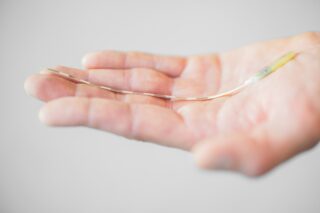The Kyoto-based start-up Hacarus is on a mission to transform medicine with artificial intelligence. Founded in 2014, it is now a leading provider of lightweight tools that can help provide faster, safer treatment using data-driven AI insights.
Hacarus’ main AI engine is built using Sparse Modeling, an AI method that understands data like a human would and in doing so is far more resource, time and energy-efficient when compared to deep learning. Backed among others by Miyako Capital based at Kyoto University, the company’s solutions aim to increase efficiency in the medical and manufacturing fields. Hacarus technology is currently being evaluated both in Japan and Germany for applications such as aiding in medical trials, preemptive treatment and medical diagnostics.
At MEDICA 2019 the company will be showcasing AI tools in the field of electrocardiography (ECG). The company is exploring how AI technology can be applied to detect anomalies in a patient’s heart with ECG data in almost real time. Adrian Sossna, the company’s international business development lead, said:
“We are really excited to bring our explainable AI solutions built in Japan to MEDICA, and are looking forward to a great trade show.”

Hacarus is also developing an AI engine capable of aiding doctors in specialist stroke diagnostics. By combining information from MRI and other vital patient data, the model is able to accurately help doctors elect the appropriate treatment within seconds.
The AI can also be used to help diagnose and treat bone fractures. The use of sparse modeling based technology can “de-noise” the X-ray by removing non-essential features, such as fat tissue or skin. With these features defined, it can then graph the characteristics of a healthy bone. This result is then compared with X-rays of bone fractures to determine where and how the fracture occurred, which reduces the time needed to decide on the appropriate treatment.










